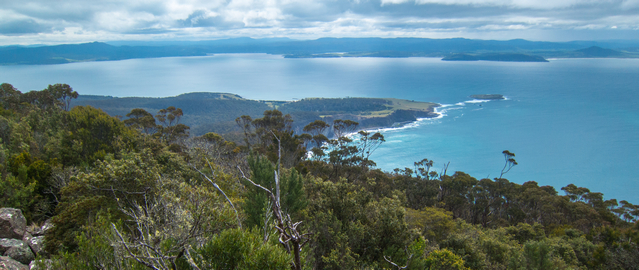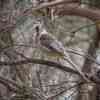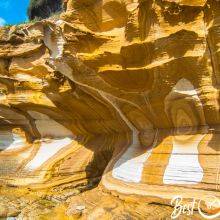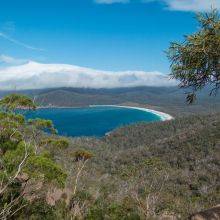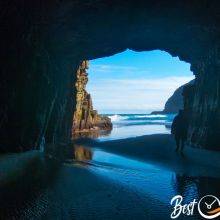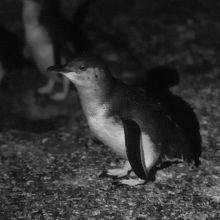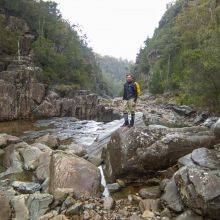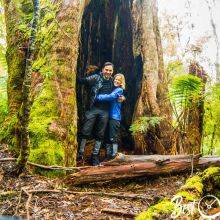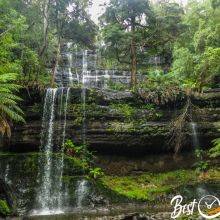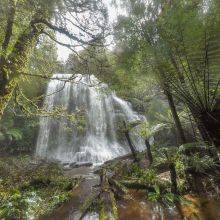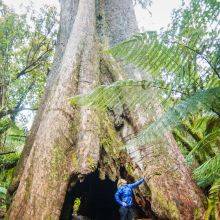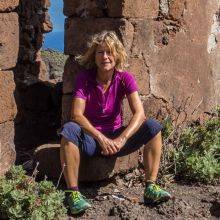When Is the Best Time
Most of the day visitors come for the Painted Cliffs. However, the hike can be a bit crowded during the peak season in summer. The summit is pretty small; there is just space for a few hikers. For hiking, the driest and best months are from December to March/April. From May to October, fewer visitors due to colder temperatures. The winter months from June to August can be pretty chilly especially during the night with temps around 7°C. It depends on you if you prefer warmer temperatures and less rain or fewer people on the island. If it's too rainy, the last part of the climb might be slippery. November (end of spring) most of the plants and flowers are in bloom, but it's also one of the wettest months.
Ferry
The ferry is going from Triabunna to Darlington, Maria Island. This island is very popular, and the ferry was often fully booked in summer. Now the service is offered more often. It’s a big advantage to visit the island by bike.

For renting it has to be booked together with the ferry ticket. It’s a bit pricey $ 33 for adults and $ 20 for children for each bike and day. Check the ferry timetable and return fares
September-April: The ferry transport up to five times daily depending on demands and bookings.
May-August (winter): The ferry goes up to three times daily on five days. It's not going on Tuesdays and Thursdays.
Avoiding Crowds
The ferry service is offered more often from April 2017 on. Even more day visitors are coming to the island. During summer, up to several hundred tourists visit the island each week. From now on the winter is the best time to visit Maria Island. When the ferry left the island in the afternoon, it becomes more tranquil and peaceful. If you arrive on Monday or Wednesday, you have to stay for two nights at the campground. The big advantage; the next day only a few people are on the island. No ferry transfer on Tuesday and Thursday. The hike itself might be not very crowded in spring, fall, and winter.
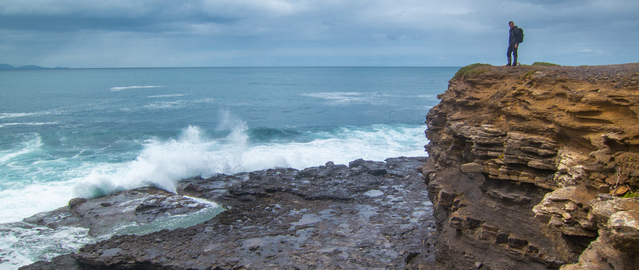
Fossil Cliffs
Weather
It's a mild climate on Maria Island. The average summer day temperature is around 21°C/70°F. The driest month is January although rain showers often occur the entire year. One of the wettest months is November. May and October are a bit cooler but also worth a try. Night temperatures in winter and spring are below 10°C/50°F. During our stay in November, the nights were chilly around 6°C/43°F.
Best Months to Visit
Location and Tips

We combined the Bishop and Clerk trail with the Fossil Cliffs. This combination is 12 km long and takes 4-5 hours depending on your fitness level. If you are limited of time and don’t stay overnight, it might be difficult to enjoy the trail to the top and to get the ferry in the afternoon. The views along the whole trail are spectacular.

You may spot different birds, Forester kangaroos, and wombats. The first part of the walk is more a gravel road than a hiking trail. That’s the reason that we’d taken the rented bikes to the Fossil Cliffs and left them when the trail to Bishop and Clerk became too steep at the saddle. First, you pass a historic building, cement ruins, and a settler's cemetery before you reach the Fossil Cliffs. They are a great example of life 290 - 260 million years ago. The rocks which contain the fossil beds consist of limestone and siltstone. In the 1920s the limestone was mined for cement production. Finally, in 1979 the cliffs were recognized as a world-class site for rich marine fossil beds. From the Fossil Cliffs plateau, you can already see Bishop and Clerk “far away” to the right.

After the cliffs, the steep trail leads over the saddle through eucalyptus and she-oak forest until you reach a huge field of rocks. From now on you follow trail makers zigzagging until you get to huge boulders. It’s a challenging climb and scrambles to the lookout at Bishop and Clerk but worth the effort. The summit 620 m high is often windy and cloaked in clouds. The 360° view is outstanding.
